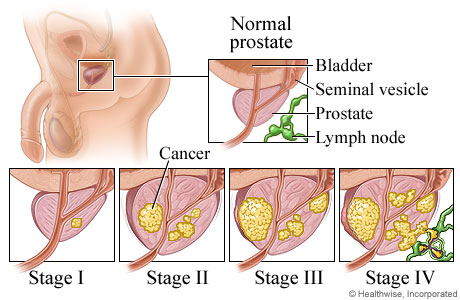Staging and Treatment of Prostate Cancer in Current Medical
If prostate cancer is diagnosed, other tests are done to find out if cancer cells have spread within the prostate or to other parts of the body. This process is called staging. Whether the cancer is only in the prostate, or has spread outside the prostate, determines your stage of prostate cancer. The stage of prostate cancer tells doctors what kind of treatment you need.
There are two schemes commonly used to stage prostate cancer. The most common is promulgated by the American Joint Committee on Cancer, and is known as the TNM system, which evaluates the size of the tumor, the extent of involved lymph nodes, and any metastasis (distant spread) and also takes into account the cancer grade. As with many other cancers, these are often grouped into four stages (I–IV). Another scheme, often still used by clinicians, is the Whitmore-Jewett stage. Briefly, Stage I disease is cancer that is found incidentally in a small part of the sample when prostate tissue was removed for other reasons, such as benign prostatic hypertrophy, and the cells closely resemble normal cells and the gland feels normal to the examining finger. In Stage II more of the prostate is involved and a lump can be felt within the gland. In Stage III, the tumor has spread through the prostatic capsule and the lump can be felt on the surface of the gland. In Stage IV disease, the tumor has invaded nearby structures, or has spread to lymph nodes or other organs.

The normal treatment of the prostate cancer includes active surveillance, surgery, radiation therapy, Chemotherapy, Hormone therapy, or the comprehensive use of the above. As for the most suitable treatment, one should consider the extent of tumor invasion (also called a stage), the malignant degree of the cancer cells, PSA concentration in the blood, etc. At the same time, one must consider the patient’s age, physical fitness, and respect their choice, as these treatment have serious side effects, such as erectile dysfunction, incontinence, etc. A person must find a balance between efficacy and quality of life when they choose a treatment.